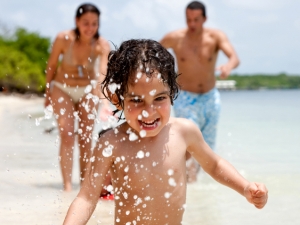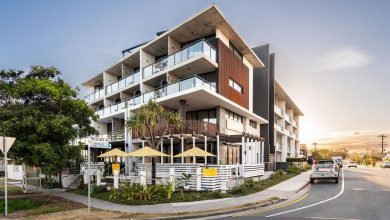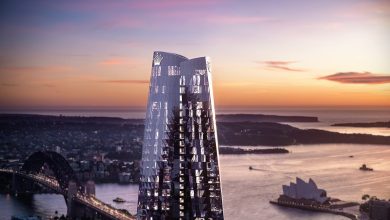
Breakthrough in Domestic Travel
At last it looks as though domestic travel has turned the corner with latest tourism figures indicating more Australians are travelling internally although they are being more frugal with spending.
More people are flying in Australia than ever before, with a record 55 million passengers carried on more than 600,000 flights in the year to June 2011. Total domestic passenger numbers increased by 3 million, up 5.8% over the previous year.
The National Visitor Survey shows overnight trips for the June quarter 2011 rose by 8% while nights rose by 5% and spending by 12%. In previous years domestic tourism had dropped by 1% in 2010, 7% in 2009 and 2% in 2008.
For the year ending June 2011, growth was moderate. Overnight trips were up by 4% while nights and spending were unchanged.
“In terms of trips and nights this is the best June quarter result since before the global financial crisis,” said the minister for tourism, Martin Ferguson. “The 5% increase in business travel for the year has helped businesses to offset the high level of outbound travel. While the long-term trend in domestic travel remains a challenge for the Australian tourism industry, these are positive figures.”
Results for the year ending June 2011 show moderate growth in domestic overnight trips for New South Wales (5%), Victoria (3%), South Australia (2%) and Queensland (4%) with stronger growth for Western Australia (19%).
Weaker results were recorded for the Northern Territory (down by 11%), Tasmania (down by 4%) and the ACT (down by 13%).
In Queensland, overnight trips for the June quarter 2011 were up by 10% and nights by 9%. Intrastate travel is leading the growth in Queensland with trips up by 13% and nights by 10%.
Tourism Australia managing director Andrew McEvoy said a combination of reasons were behind the growth, including more festivals and events around the country. Drawcards included the Crave and Vivid festivals in Sydney and the Tour Down Under and Clipsal 500 in South Australia.
Mr McEvoy said tourism organisations and operators had been more aggressive in their marketing after the floods and cyclones that hit Queensland and floods that hit Victoria.
Overall, the total economic value of domestic tourism fell by 0.7% to $70 billion.
NSW experienced its strongest June quarter in eight years this year, with domestic visitor numbers rising by 11%, tourism minister George Souris said. NSW received a total of 24.1 million domestic overnight visitors who stayed more than 81 million nights and spent $13.1 billion.
In the June quarter, the number of nights domestic tourists spent in NSW was up by 12% – more than double the national average.
This had meant an additional $782 million for the state’s economy, Mr Souris said.
Visitor numbers to Sydney increased by 21% and visitor nights rose by 19%.
Regional NSW saw a 3% increase in both visitor numbers and nights.
Queensland tourism minister Jan Jarratt has welcomed the data showing Australians visiting Queensland went up 4% to 16.4 million people.
While the number of holiday visitors alone for the year declined 1% to just under 7 million travellers, there were increases in business travel and people visiting friends and relatives which helped buoy the overall visitor numbers up 4% above the previous year.
“Australians who came here to visit friends or relatives went up 2% to 5.3 million travellers for the year ending June 2011. Those travelling to Queensland for business increased 13% to 3.4 million people.
“While more Australians travelled to Queensland last financial year, the amount they spent decreased 4% to $11.1 billion, largely due to the drop in holiday spending which dipped 9% to $5.7 billion.”
Ms Jarratt said on a regional basis, Brisbane fared well, with domestic visitors up 18% to 5 million in the year ending June 2011, largely driven by strong business and holiday markets. Visitor expenditure in Brisbane also increased 17% to $2.6 billion. The Sunshine Coast performed strongly with domestic visitors increasing 14% to 2.8 million and expenditure up 6% to $1.7 billion.
The Whitsundays saw 490,000 Australians visiting the region – 6% more than during the previous year. However, the amount they spent dropped 10% to $486 million. The Gold Coast saw a modest 1% increase in domestic visitors to 3.3 million, however their spending dropped 14% to $2.6 billion. Tropical North Queensland had a 10% decline in domestic visitors to 1.3 million for the year ending June 2011, and expenditure was down 13% to $1.4 billion.
But in Western Australia there were calls for the state government to spend more on tourism with the figures showing a 24% drop in the number of interstate visitors coming to holiday in Western Australia.
Spending by interstate visitors in WA slumped by $103 million last financial year. The head of Tourism Council WA, Evan Hall, says more people are visiting places like Melbourne, that has heavily invested in marketing, events and infrastructure.
“Now if we were to see the state government invest in tourist destinations like Broome the same way they invest in, infrastructure for the resources sector, we’d definitely see those destinations take off.”
Meanwhile Australians are being invited to share their Australia for new tourism campaign
Tourism Australia has unveiled as the next stage of its There’s nothing like Australia campaign – a domestic holiday push that invites Australians to share their Australian holiday experiences online.
The Accommodation Association of Australia is urging Australians to get behind the push to boost domestic tourism through the next phase of Tourism Australia’s current marketing campaign.
“It’s well known that domestic tourism has faced a range of recent challenges that have made it much more attractive for Australians to holiday overseas,” said the AAA chief executive officer, Richard Munro.
“It shouldn’t be forgotten that there are thousands of amazing destinations within our own country – particularly away from our capital cities – that are also great places to stay. The accommodation industry hopes the next phase of the campaign prompts Australians to think ahead and plan to visit a destination within Australia during school holidays, on a long weekend, over the Christmas-New Year period or when they go on leave.”

AccomNews is not affiliated with any government agency, body or political party. We are an independently owned, family-operated magazine.







